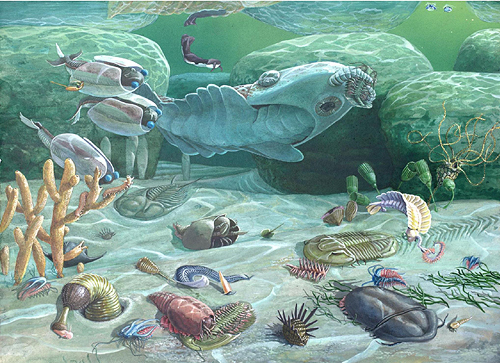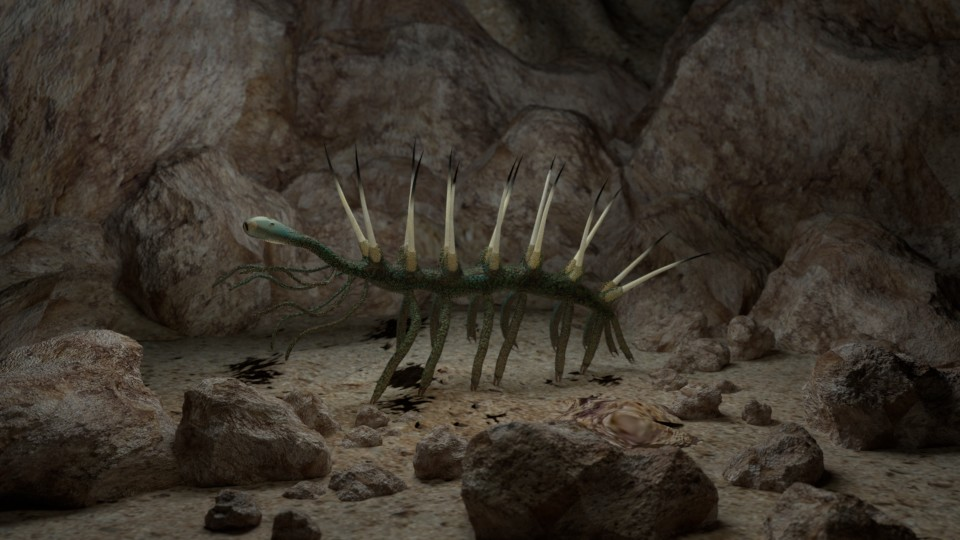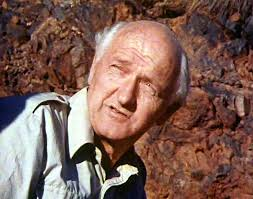Sidebar. The Ediacaran Period – multicellular life becomes evident (eventually)
What were the forms of living organisms long ago, and how do we know that? Fossils large and small (dinosaurs, impressions of chains of bacterial cells) are excellent sources of information. So are chemical remnants not tied to specific bodies; examples are four-ringed sterane molecules, which are degradation products of cells with nuclei, the advanced eukaryotes. Macroscopic fossils don’t go back very far.
It took a long time, almost 4 billion years from the formation of the Earth, to get clearly multicellular animals. One big breakthrough was the discovery of the Burgess Shale in British Columbia. Paleontologist Charles Wolcott discovered this rock formation in 1909. It contained a wealth of fossils of diverse kinds of organisms from as long as 508 million years ago. Only in 1962 were they studied systematically for their relations to modern organisms. Some of the organisms resemble modern ones and appear to be ancestors. Others resemble nothing modern. They seem to be nature’s experiments in body plans that didn’t last.

web.standford.edu
Among the odd life forms is the aptly named Hallucinogenia

By Jose manuel canete – Own work, CC BY-SA 4.0, https://commons.wikimedia.org/w/index.php?curid=56523342
The apparently sudden origin of many multicellular organisms was denoted at the Cambrian Explosion, a sudden diversification (radiation) of many species by evolution from simpler forms. Another surprise was in store, with the discovery of yet older fossils (600 mya) in the rocks of the Ediacara Hills of South Australia by intrepid geologist Reginald Sprigg in 1946. Life forms here look even more unusual.

aso.gov.au
Of course one expects continuity of evolution, even if it has sudden jumps in forms. There is no longer any possibility of de novo generation of new trees of life; modern organisms are so efficient in exploiting any niche of life that new organisms would be eaten up or outcompeted tout de suite.
It would be fascinating to know how the life forms evolved from earlier forms (Ediacaran from single-celled or hard-to-find but smaller multicellular forms, Cambrian from Ediacaran, modern from Cambrian). There had to be accumulations of many genetic mutations and then selection – with difficulty of accumulating useful mutations, especially in small genomes of small organisms, perhaps accounting for the long delay in getting obvious multicellular organisms on Earth. No genes are preserved from organisms more than about a million years (sorry, spoiler for Jurassic Park, but you knew that). The tools we have for estimating times of origin of species are the molecular genetics of modern organisms. We may compare genetic sequences of living organisms and find differences. They can be places in a hierarchy, a tree structure, with greater divergences indicating earlier divergences. There are a number of necessary assumptions such as the rarity of reversions to original genetic sequences in any location and a rate of mutation shared among diverging lines.
We also are naturally curious why some life forms (species, higher taxa, all the way to phyla) disappeared along the way. A number of causes suggest themselves – changing environmental conditions, efficient predators or herbivores or competitors. We see such causes operating even today, in the lab and in the wild.
The limitations on accumulating “great” mutations and the challenges of taxa surviving climate changes and other taxa are most relevant for the habitability of a planet. There is a Gaia hypothesis that the whole biota of the Earth somehow tunes the conditions for all life to let it thrive. That is categorically disproven in various ways. These include the Snowball Earth episodes that came very close to obliterating all life on Earth, episodes generated by life itself in generating so much oxygen. There is no guarantee that a planet that once had life could maintain it. We must be careful in inferring the conditions of habitability and of its perfect continuity.